Boiling Point: Gavin Newsom signed a bunch of climate laws — and vetoed others
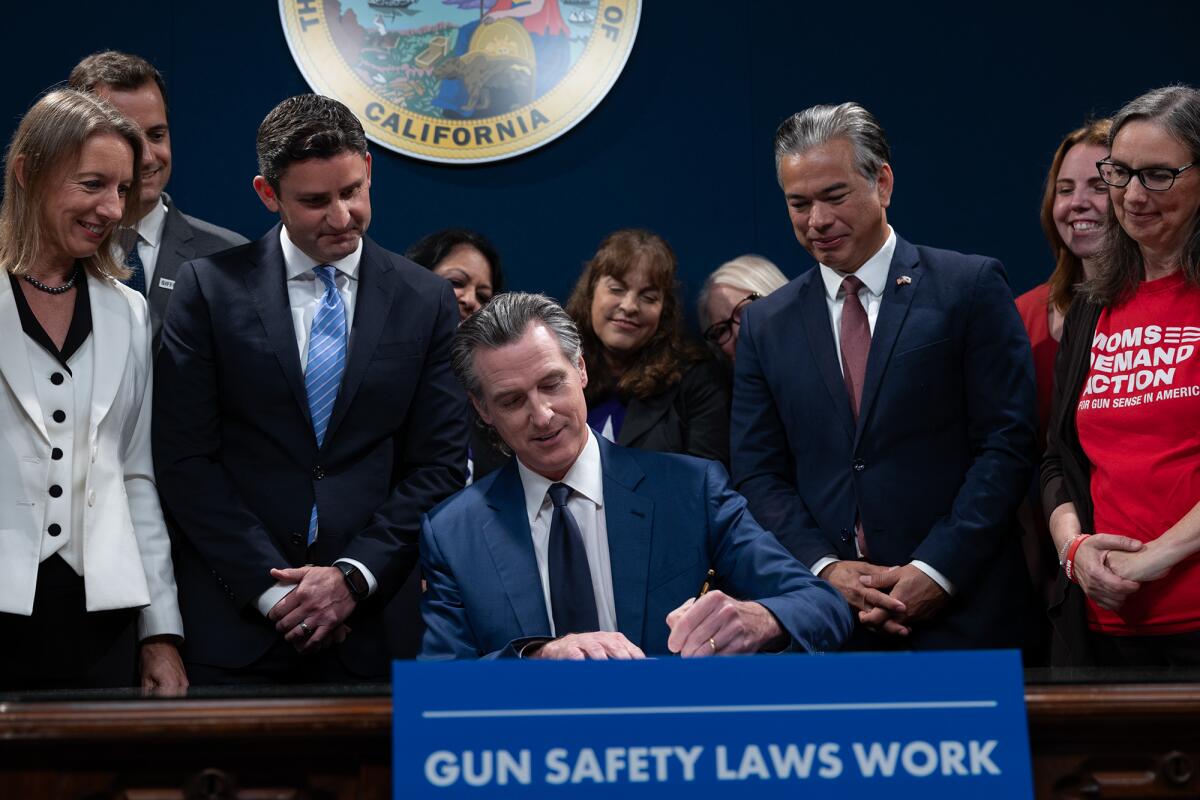
- Share via
California continues to make waves on climate. In some cases literally.
Over the weekend, Gov. Gavin Newsom signed dozens of bills dealing with renewable energy, landscape conservation and water use — and vetoed many others. Here’s a roundup of some highlights — or lowlights, depending on your views.
I’ll have a second legislative roundup next Tuesday, so feel free to email back with bills I should include.
For my weekly summary of top stories from around the West, just scroll down.
Corporate carbon disclosure
In the most high-profile climate story out of Sacramento, Newsom signed two bills that will require big companies to disclose how much planet-warming carbon they’re spewing into the atmosphere — and the financial risks they face from climate change. But he also wants lawmakers to make the measures more business-friendly next year, per my L.A. Times colleagues Tony Briscoe and Dorany Pineda.
You're reading Boiling Point
Sammy Roth gets you up to speed on climate change, energy and the environment. Sign up to get it in your inbox twice a week.
You may occasionally receive promotional content from the Los Angeles Times.
Additionally, Newsom signed a bill that will strengthen requirements for oil companies to plug old wells, Tony and Dorany report — although he again suggested that a legislative cleanup might be needed to ensure there are no unintended consequences. Climate and environmental justice activists had worried that the governor would veto the bill, with some in his administration arguing it could make the problem of orphan wells worse, as Tony reported previously.
Another carbon-related measure, Assembly Bill 1305, also earned Newsom’s signature. The office of Assemblymember Jesse Gabriel (D-Encino), the bill’s author, issued a statement saying it would “require new transparency and disclosure requirements for buyers and sellers of carbon offsets,” thus making it harder for companies to exaggerate the climate benefits of their investments in protecting forests and keeping carbon out of the atmosphere — a rampant problem in California and around the world.
But Senate Bill 390 — which would have further cracked down on sketchy climate claims by making it illegal to sell offsets that don’t actually keep carbon out of the atmosphere — did not win the governor’s signature. Newsom wrote that although he supports the bill’s goal, he didn’t like the strategy of “imposing civil liability for even unintentional mistakes about offset quality,” which he said could inadvertently penalize well-meaning people and create “significant turmoil in the market for carbon offsets.”
Building more renewable energy
Newsom held true to the deal he struck with legislative leaders last month, signing a bill designed to get the state’s first offshore wind farms built — and maybe some geothermal power plants too — by allowing a state agency to sign long-term contracts to buy electricity from those facilities on behalf of all Californians. Clean energy advocates were thrilled.
The governor also signed a bill requiring state officials to prepare our ports for offshore wind power, as well as legislation from incoming Senate leader Mike McGuire (D-Healdsburg) that’s meant to get offshore wind farms through the environmental review and approval process faster. And speaking of ocean energy, Newsom also signed Senate Bill 605, which will require state officials to study the possibility of generating electricity from our waves and tides — hence my “making waves” joke earlier.
On the solar front, Newsom signed one bill that would extend existing caps on permitting fees for rooftop solar systems, and another that would ensure continued funding for solar panels on low-income housing — two small wins for an industry facing serious political challenges elsewhere, as I’ve written recently.
Newsom also gave the OK to legislation directing state officials to study the potential for solar panels along highways, where it could be easier and faster to build them than in the desert. Canary Media’s Jeff St. John wrote about the possible benefits.
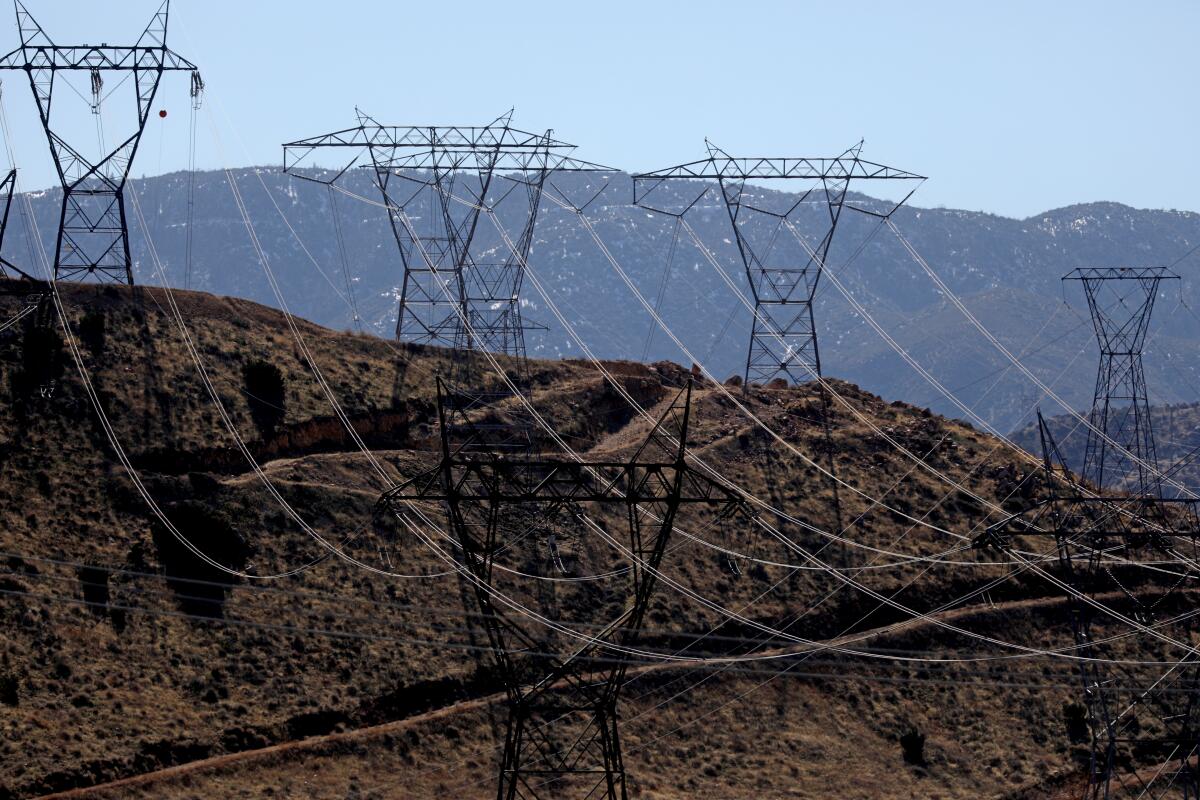
Tough luck for transmission lines:
In perhaps his most surprising veto, Newsom rejected Senate Bill 619 from Sen. Steve Padilla (D-Chula Vista), which would have sped up the permitting process for power lines — crucial tools for getting renewable energy from where it’s generated to where it’s needed. The bill would have allowed power-line developers to request environmental reviews from the California Energy Commission rather than the notoriously slow California Public Utilities Commission. Not a single lawmaker voted against it.
But the Public Utilities Commission urged Newsom to reject the bill, and he assented. In his veto message, the governor cited the risk of bureaucratic overlap, writing that putting a single agency in charge of all aspects of new energy projects “can lead to better results for Californians,” including lower costs.
Newsom also vetoed Senate Bill 420 — another proposal designed to get power lines approved faster, as I wrote in a piece earlier this year on the need for a lot more electric transmission, ASAP. Newsom wrote that the bill “compounds existing permitting complexity for these projects by devolving permitting authority of mid-sized electric transmission projects from a single state agency to local agencies.”
Protecting our lands and waters
In a major win for conservationists, Newsom signed Senate Bill 337 from Sen. Dave Min (D-Irvine). The bill commits to state law the goal of protecting 30% of California’s lands and waters by 2030 — the “30 by 30” target endorsed by scientists and biodiversity advocates around the world, who say it’s key not only to protecting animals but to ensuring a livable world for humans.
Newsom and President Biden have both embraced 30 by 30. But now it’s the law in the nation’s most populous state.
**
Like I said earlier, more to come on California bill signings next week, For now, here’s what’s happening around the West:
TOP STORIES
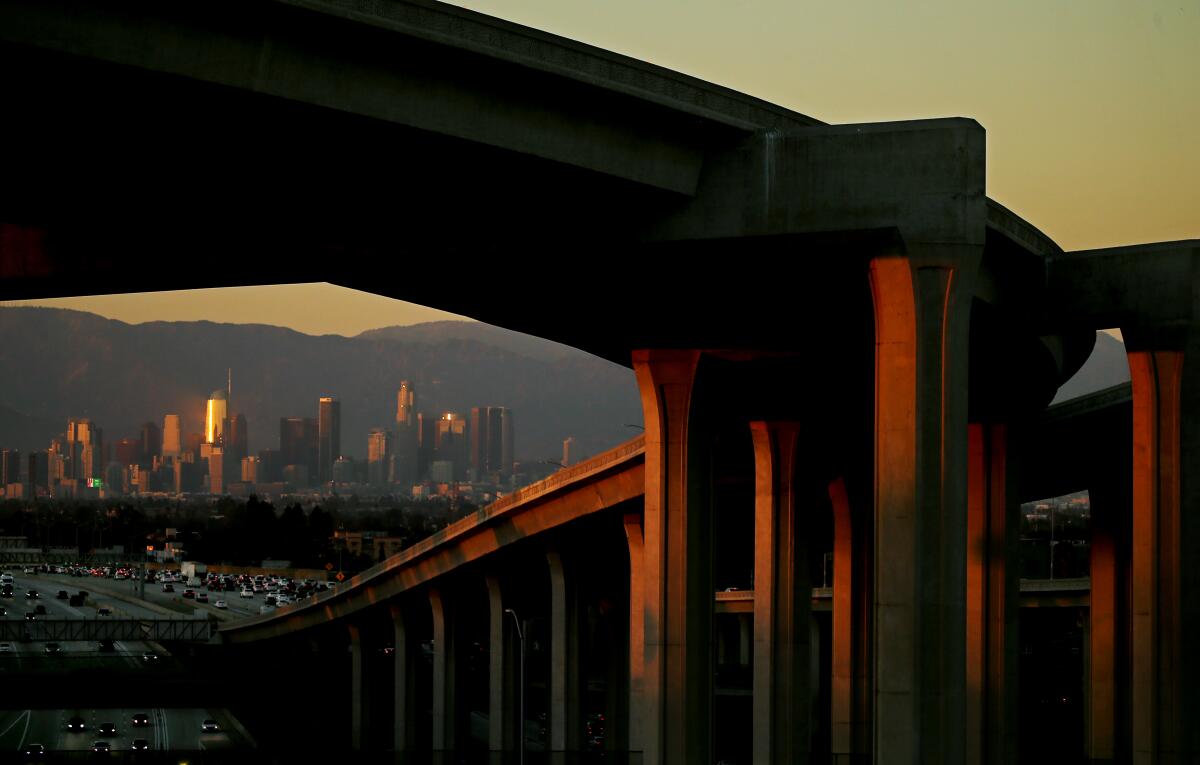
Earth just followed up its hottest July on record and hottest August on record with its hottest September on record — by an absurd margin. Details here from the Guardian’s Damian Carrington. The numbers serve as a powerful reminder of the need to protect the most vulnerable from extreme temperatures — as does this story by my colleague Helen Li on the Angelenos roasting in their RVs during the heat wave last weekend. The numbers also provide a compelling backdrop to a new report from Los Angeles City Controller Kenneth Mejia concluding that the city needs to update its 4-year-old Green New Deal — in part by doing a lot more to get people out of cars, The Times’ Hayley Smith writes.
The largest dam removal in U.S. history is playing out on the Klamath River, along the California-Oregon border. The Times’ Ian James has an amazing look at the Native American tribes who fought for decades to make this happen and are eager to see the river and its ecosystems roar back to life. And check out this stunning video from my colleague Albert Brave Tiger Lee too. In other dam news, the Pyramid Lake Paiute Tribe is modifying a dam in northern Nevada to allow Cui-ui sucker fish to migrate 66 miles farther upstream, KUNR’s Kaleb Roedel writes. And in a reminder that dams generate a lot of climate-friendly hydropower — the topic of my latest Western travelogue — Canary Media’s Julian Spector notes that hydroelectricity generation is way down in the Pacific Northwest this year, even as it’s way up in California.
Wondering what’s going on in the Sacramento-San Joaquin River Delta, at the heart of California’s never-ending water conflicts? Ian James has a great high-level breakdown of the latest developments. The same state agency tasked with navigating the Delta conflict is also gearing up to require big water use reductions in cities — but many water agencies are pushing back, saying it would cost so much money to wring out those savings that they might as well just pay the proposed penalties instead, CalMatters’ Rachel Becker reports. And lest you think the plentiful “water year” that just came to a close in California means we’re out of the woods on drought problems for a while — don’t bet on it. Hayley Smith explains what comes next.
POLITICAL CLIMATE
Does Montana have an obligation to protect its residents from climate change? A court ruled that it does — and perhaps unsurprisingly, the state is appealing. Details here from the Associated Press’ Amy Beth Hanson. Although California leaders have done plenty on climate without a court order, there are still plenty of possible political obstacles here, activists say. A new analysis, for instance, finds there are a bunch of current and former executives from Chevron and other oil and gas companies on the boards of the University of California system, the Guardian’s Dharna Noor reports. And California’s newly appointed U.S. senator, Laphonza Butler, hasn’t said much about climate change policy, E&E News’ Timothy Cama reports.
Speaking of California politics, a whistleblower in the California Department of Transportation says the agency is illegally using state funds to widen a highway near Sacramento, claiming the money is just for maintenance. Jeanie Ward-Waller, a deputy director at Caltrans, claims she was demoted for objecting to highway expansions, which are intended to ease traffic but have been shown to induce more driving, Politico’s Debra Kahn reports. A new report from the Natural Resources Defense Council, meanwhile, finds that California is spending a large majority of its transportation dollars on projects that will do nothing to help people drive less, and in some cases encourage them to drive more, as Politico notes.
Tommy Beaudreau — who oversaw the Biden administration’s approval of the controversial Willow oil drilling project in Alaska and is widely admired in the Senate — will step down as the Interior Department’s No. 2. Beaudreau also worked on Colorado River issues, the Washington Post’s Timothy Puko writes. Separately, the Interior Department has a plan to phase out single-use plastics on national parks and other public lands — within the next decade, Nichola Groom of Reuters reports.
AROUND THE WEST
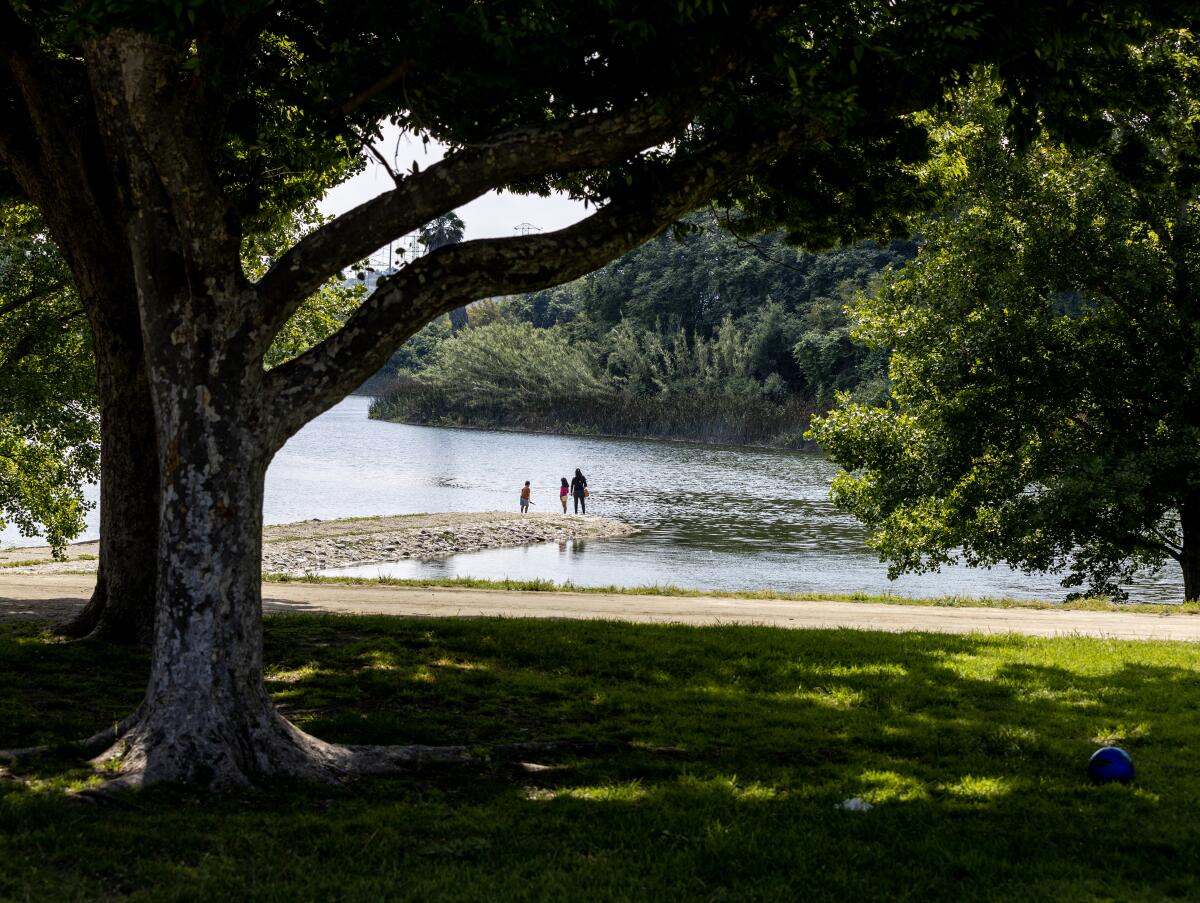
The 101 Freeway through the San Fernando Valley and the 110 Freeway between Los Angeles and Long Beach were built on ancient Indigenous roadways. That’s according to fascinating new research stemming from three local tribes — Chumash, Tataviam, and Kizh-Gabrieleño — as well as scientists from several universities, The Times’ Louis Sahagún and Sean Greene report. “We were disenfranchised from the landscape — but our people are still here,” said Matt Vestuto, chairman of the Barbareno/Ventureno Band of Mission Indians. “Now, the challenge is to restore the environment, and rebuild our nations.”
Thanks to climate change, California is likely to have a lot fewer days when it’s safe to set prescribed fires that could prevent even more damaging blazes down the road. That’s according to a new study, which the San Francisco Chronicle’s Julie Johnson explains here, noting that Southern California could see some of the worst consequences. In other fire news, Orange County has added to a spate of lawsuits against Southern California Edison over wildfire ignitions, alleging that the utility company’s equipment was at least partly responsible for two damaging blazes, my colleague Hannah Fry reports.
Arizona is forcing a Saudi-owned company to stop pumping quite so much groundwater — and using it to grow alfalfa for export to Saudi Arabia. “Its unacceptable that Fondomonte has continued to pump unchecked amounts of groundwater out of our state while in clear default on their lease,” Arizona Gov. Katie Hobbs said in a written statement, as reported by The Times’ Ian James. The company’s got additional farming operations in the Southern California desert, where it uses Colorado River water.
THE ENERGY TRANSITION
California officials are banking on plug-in hybrids playing a potentially significant role in getting gas-powered cars off the road. But some climate activists see plug-in hybrids as a dangerous distraction from electric cars that will keep us burning far too much planet-warming gasoline for far too long, as my colleague Russ Mitchell reports. As Russ notes, Gov. Gavin Newsom’s high-profile call for 100% of new passenger vehicles sold in the state to be zero-emission by 2035 doesn’t quite match up with the rule adopted by his Air Resources Board, which allows 20% of new vehicles to be plug-in hybrids with gasoline engines.
A group of energy consultants has a proposal to bridge America’s Western and Eastern electric grids, with the potential to help funnel wind power from South Dakota to California. Here’s the story from Joshua Haiar at South Dakota Searchlight. I was especially intrigued because of all the time I’ve spent writing about the potential for far-off wind farms to light up California — and the importance of limiting bird and bat deaths from wind energy. So I was also struck by this story from Emma Peterson at Inside Climate News, about how wind turbines are now the second-biggest bat killer in the U.S. after white-nose syndrome.
Another attempt to by anti-nuclear environmental groups to hasten to the shutdown of California’s Diablo Canyon reactors was rejected by federal officials, the Associated Press’ Michael R. Blood reports. Gov. Newsom is still pushing to keep the nuclear plant open past 2025, when operator Pacific Gas & Electric is currently slated to shut it down.
ONE MORE THING
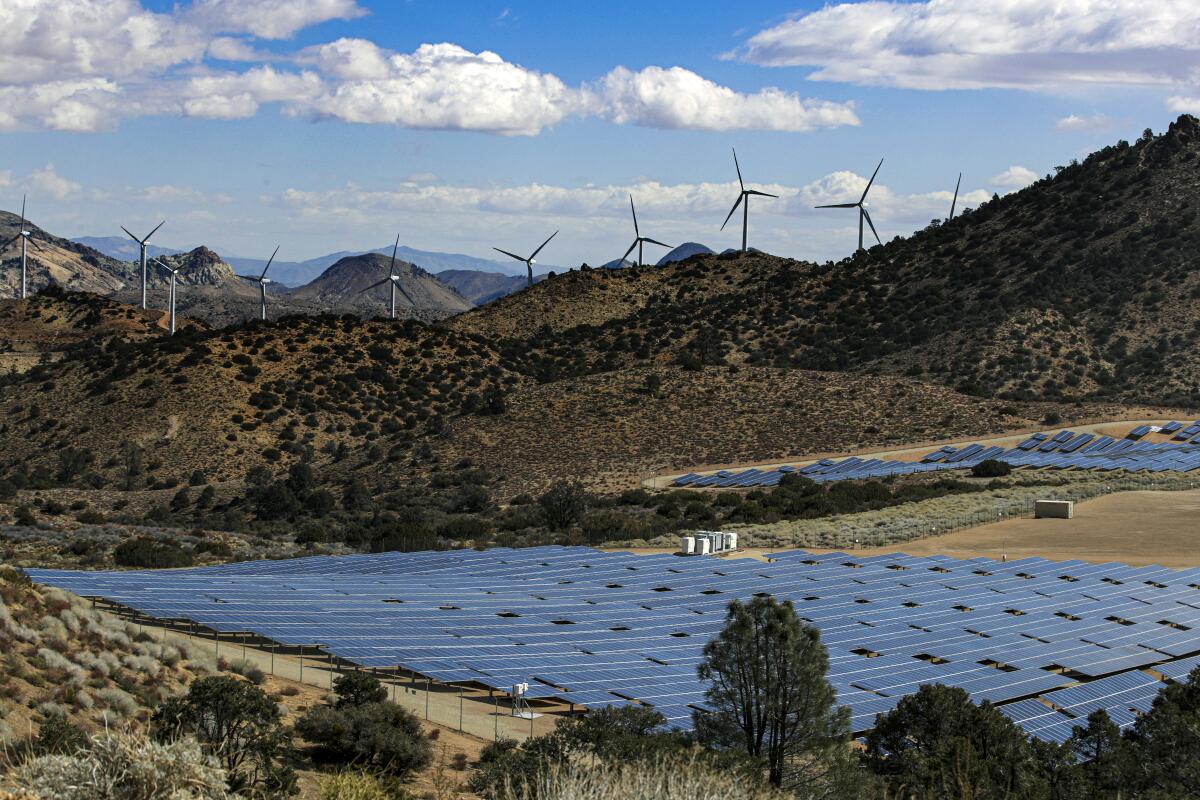
Two years ago, I polled my Twitter followers — and some of my L.A. Times colleagues — on how they would feel about living near solar and wind farms, and looking at those power plants day in, day out. The responses were wide-ranging and illuminating.
Now the Washington Post and the University of Maryland have undertaken a formal examination. They conducted a national poll, finding that 75% of Americans would be comfortable living near a solar farm, and 68% near wind turbines — a sign that the vocal opponents of those facilities in many communities may be a minority. The poll found similar levels of support in rural as in urban communities — surprising to me, based on the time I’ve spent in various rural towns for Repowering the West.
No poll is perfect, or tells us everything we need to know. But if you like renewable energy, you can take heart in this one.
We’ll be back in your inbox Thursday. To view this newsletter in your Web browser, click here. And for more climate and environment news, follow @Sammy_Roth on Twitter.
Toward a more sustainable California
Get Boiling Point, our newsletter exploring climate change, energy and the environment, and become part of the conversation — and the solution.
You may occasionally receive promotional content from the Los Angeles Times.




